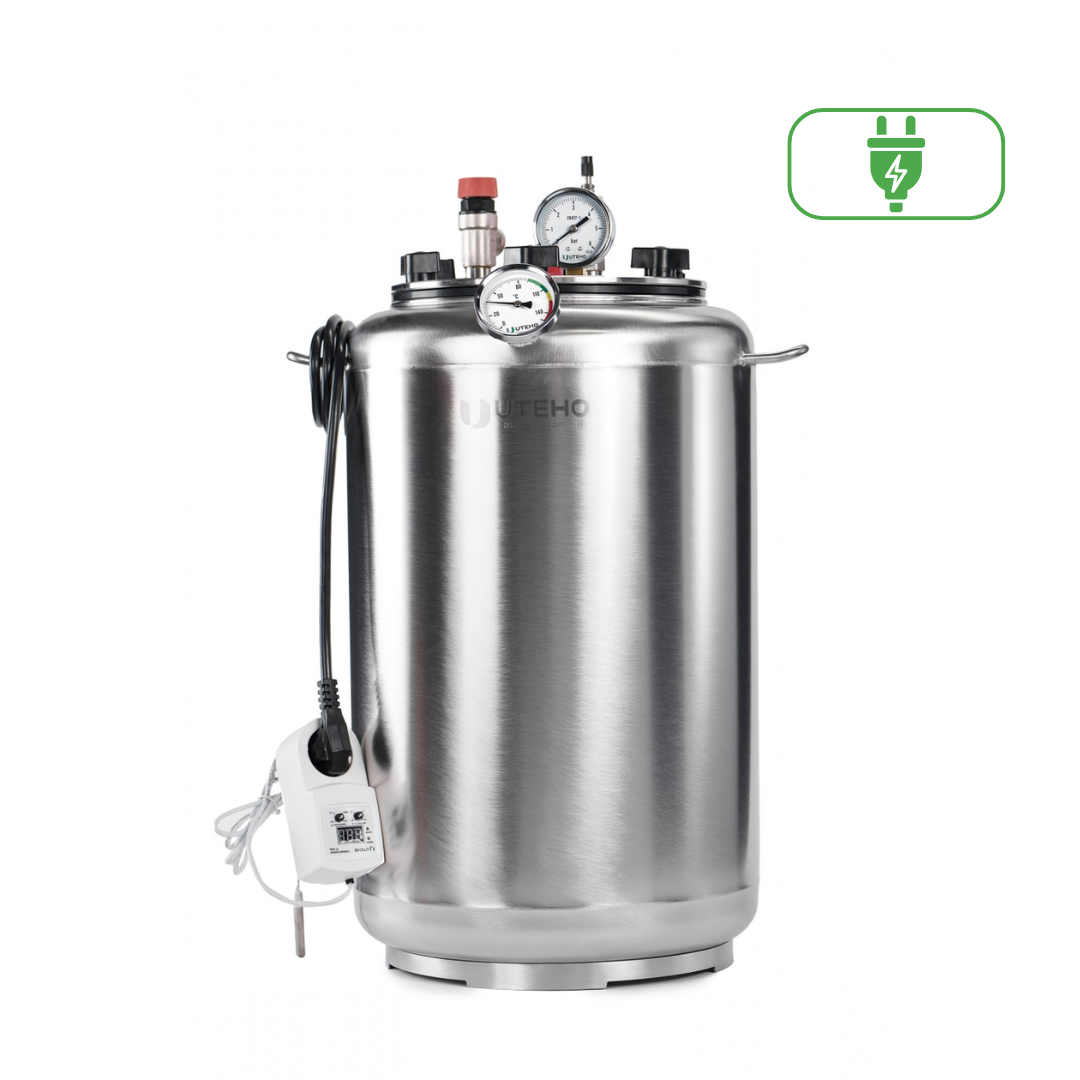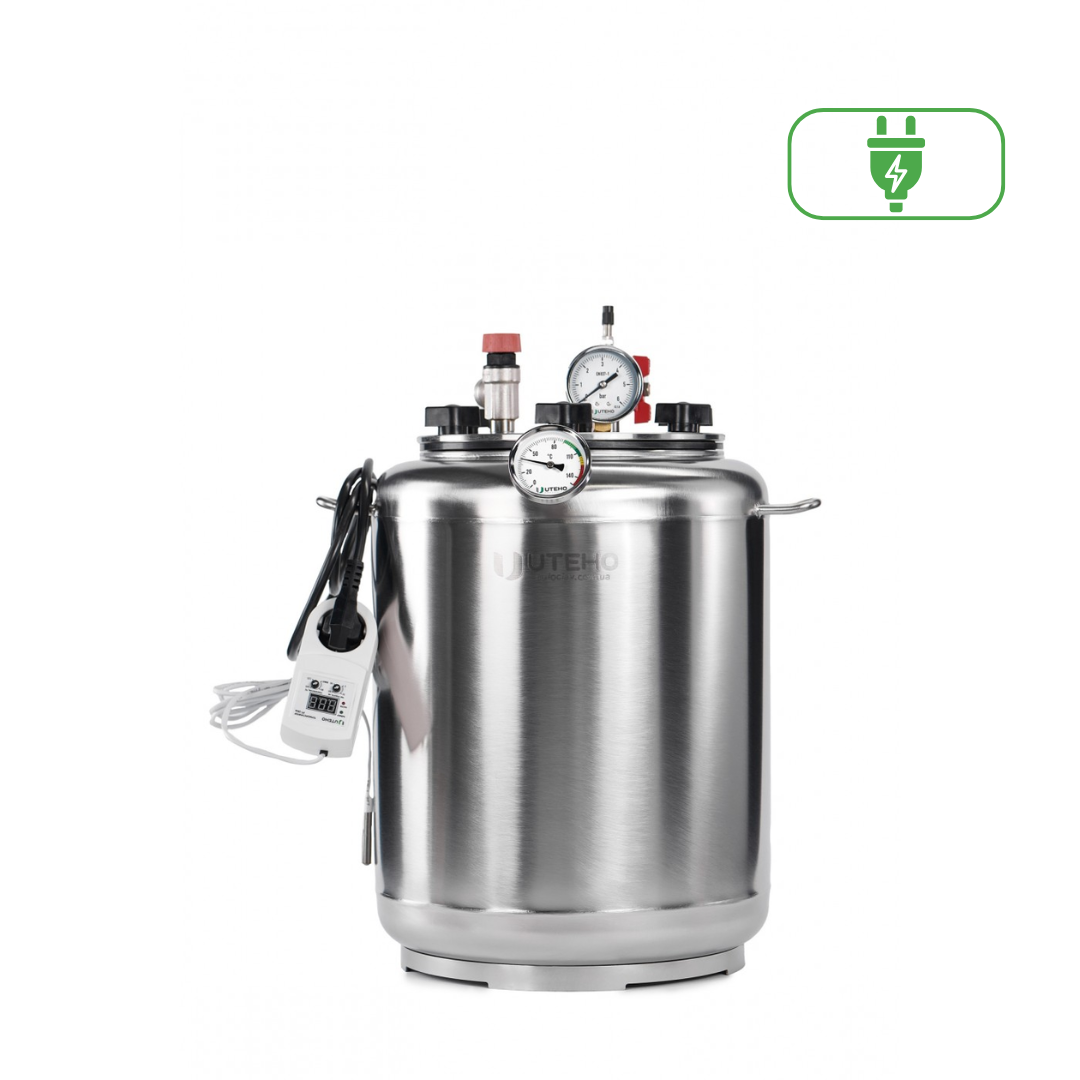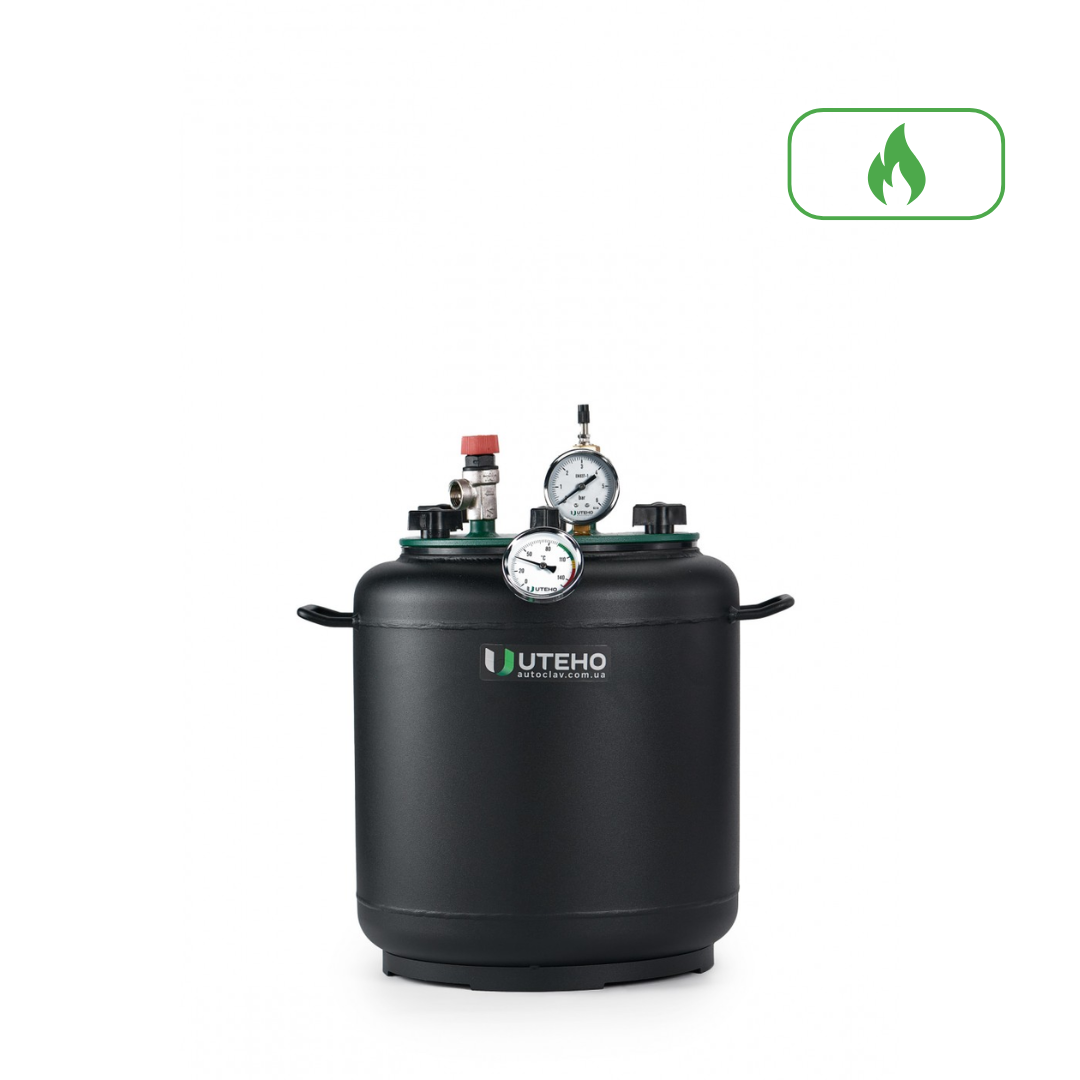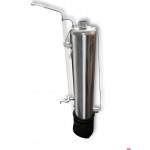
Pork Stew in an Autoclave
Delicious canned pork stew in an autoclave is a traditional meat dish that is easy to prepare at home. There are several options for preparing the conserve: without fat and with it, with fillet or with trimmings from a pork head. You can also cook pork stew with cereals or vegetables.

Selecting Meat for Pork Stew in an Autoclave
The taste of the finished stew depends on the right choice — and these are not empty words. A typical mistake of many canning enthusiasts is insufficient attention to selecting ingredients, which is why the entire batch of canned goods turns out less than ideal. Pork in an autoclave will be excellent if you:
- buy exclusively fresh meat for this;
- prefer loin, shoulder, or neck when choosing;
- buy fatty cuts. If there isn’t enough fat, you should buy lard separately;
- add a little shank to the meat for a tender taste.
BESTSELLERS
Diet Recipe for Pork Stew in an Autoclave
To prepare the conserve you need:
- moderately fatty pork — 500 g;
- onion — 1 pc.;
- black pepper — 3 peppercorns;
- salt — 1 tsp;
- bay leaf — 1 pc.
Canned pork in an autoclave is easy to prepare: cut the meat into 50 g pieces, sprinkle with salt, and moisten with 1 tsp of water. Place a bay leaf, chopped onion, pepper, and meat on the bottom of half-liter jars. Fill the jars completely, leaving up to 2 cm. Place the sealed jars in the autoclave, fill it with water and
- If the thermometer is located in the upper part of the vessel — cook for 40 minutes at 110 degrees.
- If the thermometer is located in the lower part of the vessel — cook for 40 minutes at 120 degrees.
Portuguese Stew in an Autoclave: Traditional Recipe

The traditional recipe for pork stew requires the following ingredients:
- pork (lean meat);
- lard;
- ground black pepper;
- allspice peppercorns;
- salt;
- bay leaf;
- garlic;
- you can use a ready-made spice mix for meat.
Canned pork in an autoclave at home is designed for packing into liter jars. They need to be washed, dried, and then place garlic cloves (you can even leave them unpeeled), peppercorns, and a bay leaf on the bottom. Next, add washed lard cut into small cubes. Then wash the meat, dry it with paper towels, cut into 50 g pieces, and place into the jars, leaving a 2 cm gap from the necks. There is no need to tamp down the contents — just add salt and sprinkle with ground pepper.
Seal the jars and place them in the autoclave. Pour in water so that it completely covers the contents. Then close the appliance and pressurize to 1 atm. After that, you can start heating. As soon as the temperature reaches 110 degrees (if the autoclave has a thermometer on top) and 120 degrees (if the thermometer is at the bottom), start timing and maintain for 40 minutes.
Recipe for Pork Stew from a Pig’s Head in an Autoclave
Pork stew from a pig’s head in an autoclave is prepared from the following ingredients:
- meat and lard from the head;
- a mixture of caraway, coriander, and dill (you can buy a ready-made mix);
- coarse salt;
- a pepper blend (also better to buy ready-made);
- small onions.
Rinse the pig’s head, dry it with paper towels, trim off all the lard and meat, and cut it into small pieces. Place coarsely chopped onion on the bottom of liter jars, then add the lard, and the meat on top. Sprinkle the contents with spices and pepper, and salt well. There is no need to tamp the meat. And don’t forget to leave a 2 cm gap from the lids. Seal the prepared jars and send them to the autoclave
- If the thermometer is located in the upper part of the vessel — cook for 40 minutes at 110 degrees.
- If the thermometer is located in the lower part of the vessel — cook for 40 minutes at 120 degrees.
Recipe for Pork Stew with Buckwheat in an Autoclave
The required set of ingredients:
- pork and lard;
- carrot;
- onion;
- buckwheat groats;
- salt;
- spices to taste.
Cut the meat and lard and pass through a coarse meat grinder. Separately, lightly sauté the onion with carrot in oil. Mix the resulting mince with the sauté, add well-washed buckwheat groats, and salt. Place the resulting mixture into clean jars (liter or half-liter), leaving a small space at the top. Close the jars and send them to the autoclave
- If the thermometer is located in the upper part of the vessel — cook for 40 minutes at 110 degrees.
- If the thermometer is located in the lower part of the vessel — cook for 40 minutes at 120 degrees.
Any recipe for pork stew in an autoclave will be accessible if you have a high-quality appliance at home. For large-scale stew production, you can buy an industrial autoclave, in which you can can a larger number of jars at the same time.
Our company manufactures autoclaves industrially. Thanks to this, the finished products are completely safe, durable, and convenient to use. With them, you can prepare any type of canned food.
Read also:
- Canned chicken and duck
- Pâté in an autoclave
- Pearl barley with meat in an autoclave
- Porridge with meat in an autoclave
- Stew in an autoclave







.png)





